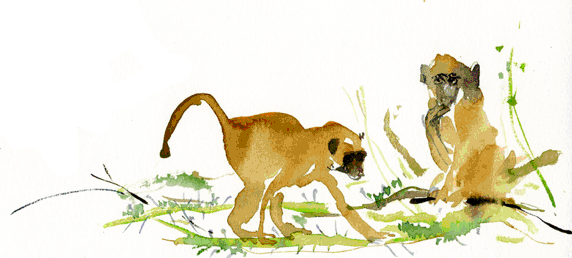
The challenges when baboon groups
conflict with human communities,
& how we solve them
How would you like to share your meal with a baboon? Click here to learn more about why baboons can spoil your picnic (PDF download - article in Swara, the magazine of the East African Wildlife Society).
You have a choice but not everyone does. We need to understand how the modern context has changed both people and baboons.
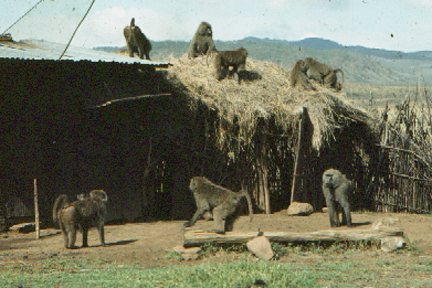
At the turn of last century there were more baboons in Africa than people. Now people are taking over. Baboons aren’t yet endangered because they are smart and adaptable. However the result is conflict which may threatened baboons (and other primates) more than habitat loss.
UNBP uses science to understand human-wildlife conflict and to devise better ways to manage it:
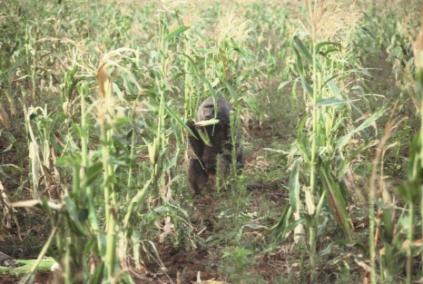
- Why do baboons eat crops (and how to stop it)?
- Taste aversion conditioning
- Better protection of crops and livestock
- Will translocation succeed in saving valuable but pest primates? (Photo: Releasing baboons at Chololo in 1984, after capturing them at Gilgil, where conflict with communities was putting the population at peril. See History of UNBP.)
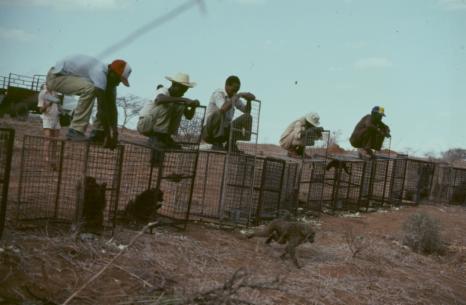
- How to safely and successfully move entire groups
- How to select suitable sites
- Why do baboons eat baby goats (and how to minimize conflict during droughts)?
- Goat chasers (photo below)
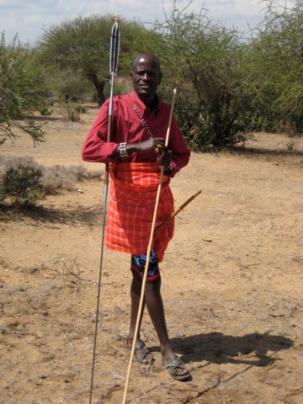
- Whistles
- Seasonal vulnerability assessment
- Community-based conservation
UNBP works with the local community to conserve what they have (baboons included) and to improve their daily livelihoods through education and economic development.
- Improving basic education: UNBP raised the funds to build a primary school, and continues to support the school and activities for the children. Many of the children who attend the school go on to work with the project as para-ecologists or with other conservation projects and NGOs in East Africa.
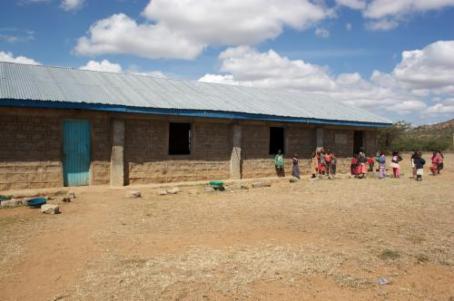
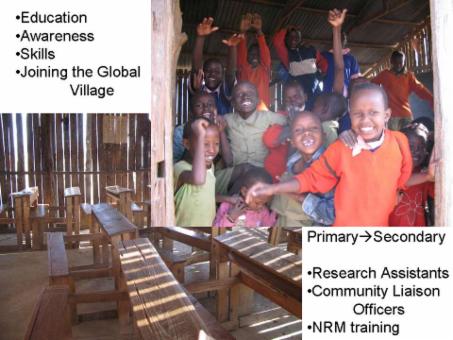
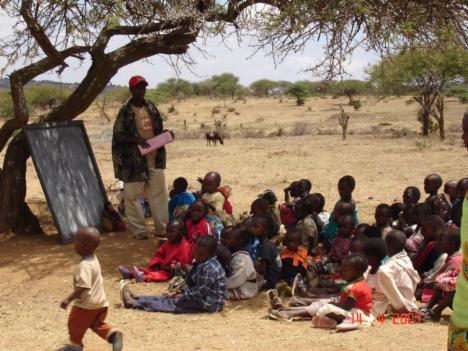
Leruk nursery school class learning about baboons and their environment, photo by Aliya Bauer.
- Conservation education. UNBP has worked with many other partners on education on conservation topics for children and adults. We have worked with the Wildlife Clubs of Kenya, and recently started an art club at Il Polei school for children, working with artist Deborah Ross (samples, below).
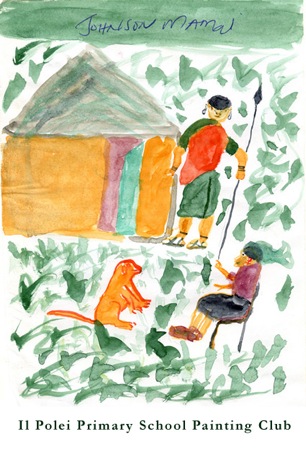
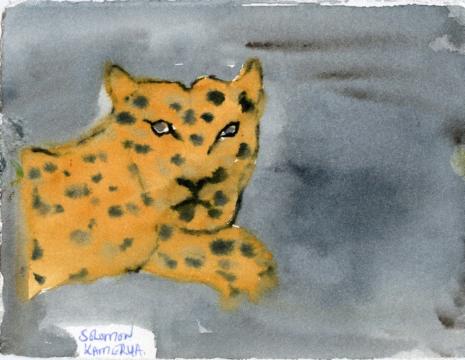
- Conservation awareness includes supporting projects such as tree plantings at the local schools.
- Diversifying the economic base - communities are extremely poor and any increase in their income helps them survive drought and feed their families - and reduce their impact on the land and local wildlife.
- At Gilgil, in the early 1980s, the project helped develop a successful woolcraft program for local farmers, making carpets from livestock wool to sell for a profit (photo, below).
- At Gilgil, in the early 1980s, the project helped develop a successful woolcraft program for local farmers, making carpets from livestock wool to sell for a profit (photo, below).
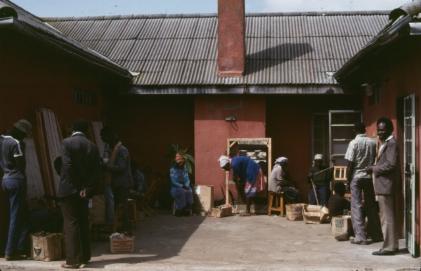
- Twala Cultural Centre - UNBP helped found a cultural center for the women's group of the nearby community Il Polei. Click here to view / download
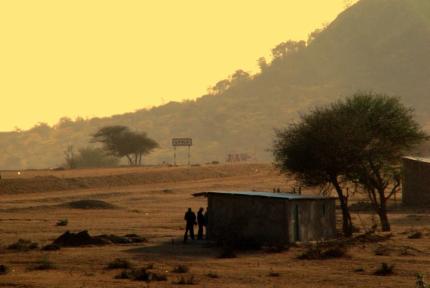
- Preserving indigenous knowledge (elders from the community show off some of the traditional items on display in the museum, below)
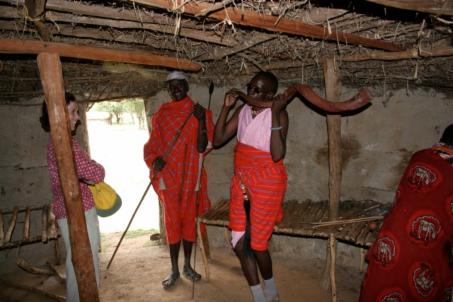
- Documenting local history and traditions
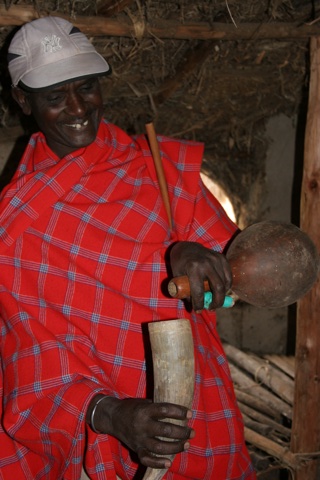
- Promoting sustainable use of resources
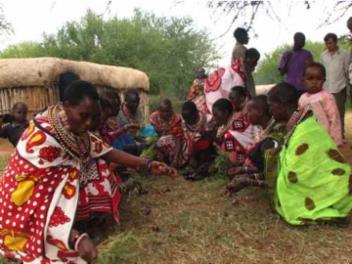
- When an invasive species of Opuntia cactus became a serious problem in the region (see History), UNBP helped the Twala women's group develop a cocktail syrup from the fruit of the cactus, to market to tourists
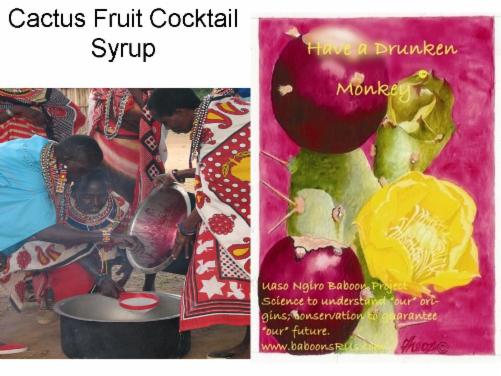
- Women's beadwork - Maasai are world famous for their beautiful beaded ornaments. UNBP is helping the Twala women's group to expand their potential for income by selling their handicrafts and networking with other efforts.
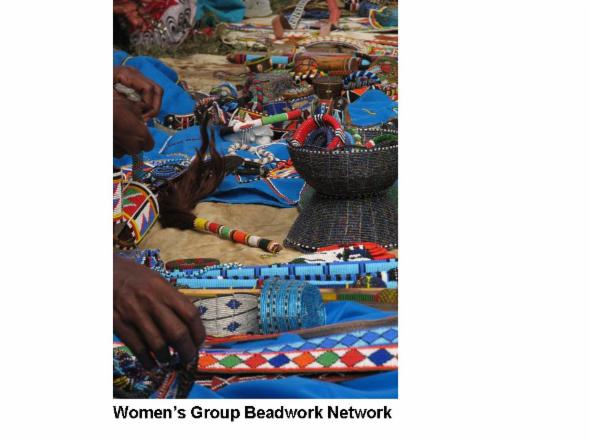
- Developing ecotourism - One of the main innovations of the UNBP has been a tourist project for developing walks for tourists, providing training for community members so they may be employed at the project or through the Cultural Center and other lodges.
- "Walking with Baboons" - view / download PDF brochure for Twala Cultural Centre
- "Walking with Baboons" - a new project has begun in the South Rift - view / download PDF brochure for the Olkiramatian Community's Walk With Baboons at the new South Rift Resource Centre.
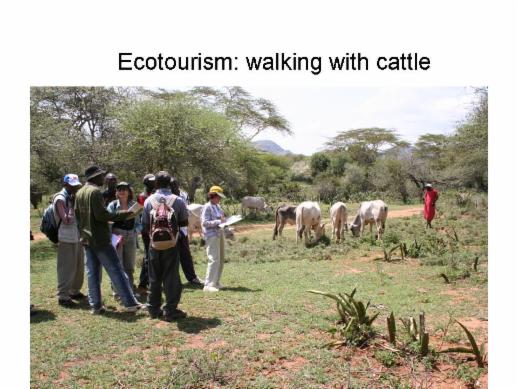
- Walking with livestock and a local Maasai pastoralist - the Twala group also offers opportunities for visitors to walk the landscape with a Maasai pastoralist, with or without their cattle - sharing their indigenous knowledge (below, photo).
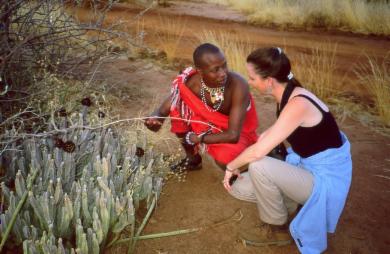
- Touring the human/wildlife landscape
- Training indigenous people as “para” ecologists and “para” biologists
- Training for eco-lodge management
Challenges facing primates today are exemplified by the baboon experience:
- Loss of habitat, land fragmentation.
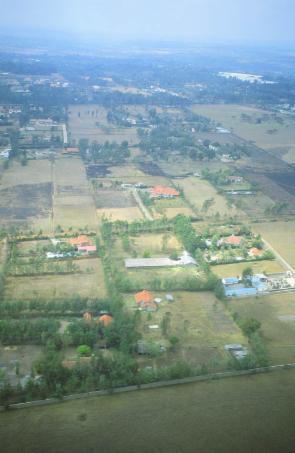
- Direct conflict over limited resources, such as water.
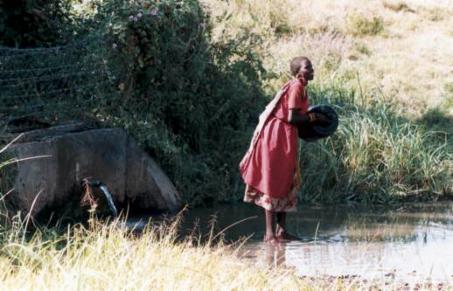
Photo: African Conservation Centre
- Indirect conflict through changing human lifestyles and human-dominated ecosystems
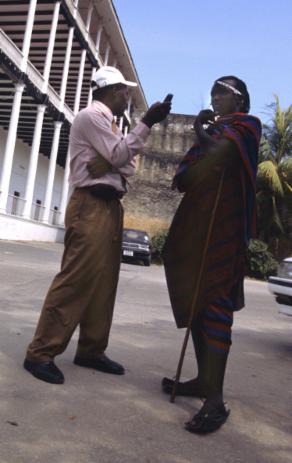
Photo: Jonathan Hanson
What is the key to the future of primates, then? For both humans and non-humans?
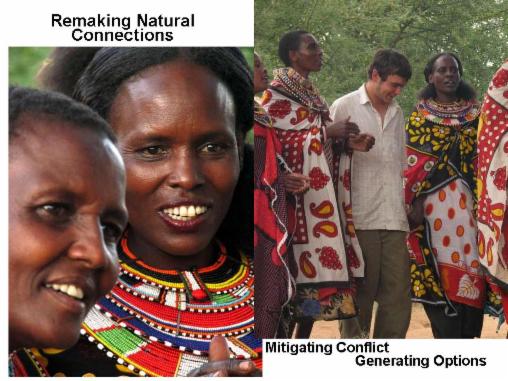
Our scientific research has taught us that sometimes it is the connections between individuals that make the most difference.
UNBP has actively sought to remake natural connections through community projects such as those described above, and some more unusual ones, such as establishing the first all-Maasai cricket team:
Ultimately, the future is in all our hands.
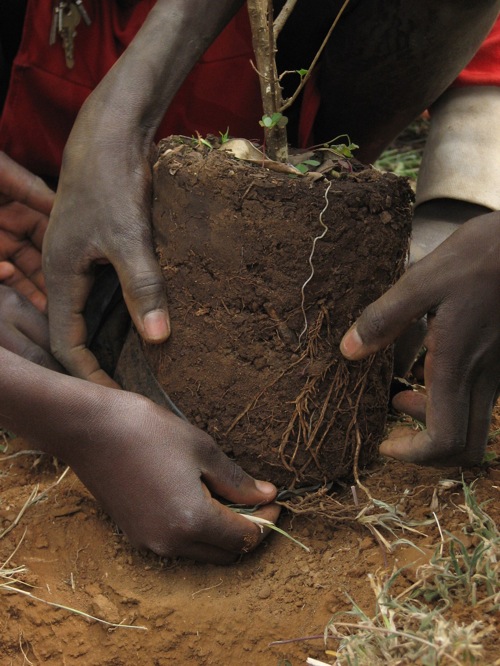
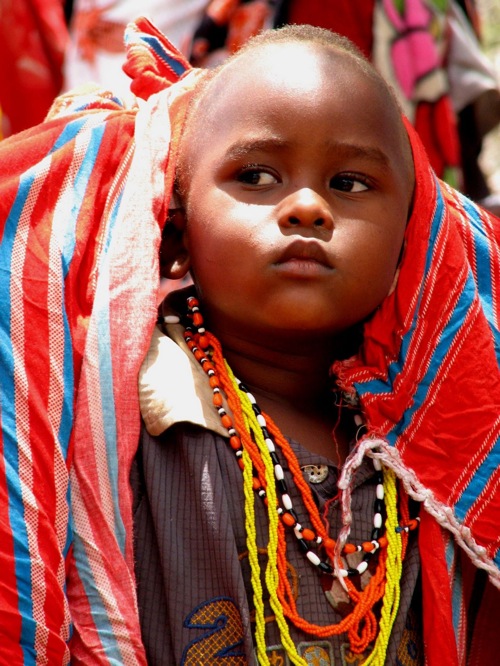
Natural connections photos, above, by Jen Douthwaite